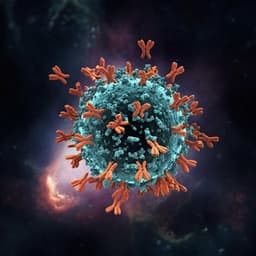
Medicine and Health
Advanced Vaccine Design Strategies against SARS-CoV-2 and Emerging Variants
J. Zhang, Y. Xia, et al.
This review sheds light on innovative vaccine strategies against SARS-CoV-2 and its variants. Authored by Jianzhong Zhang, Yutian Xia, Xuan Liu, and Gang Liu, it explores diverse vaccine types such as mRNA and viral vector vaccines, while also delving into novel approaches like structure-guided design and respiratory mucosal delivery.
~3 min • Beginner • English
Related Publications
Explore these studies to deepen your understanding of the subject.







